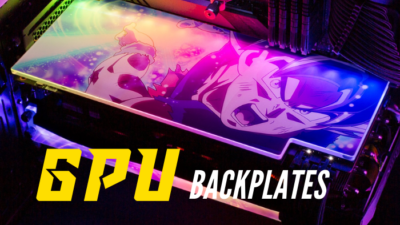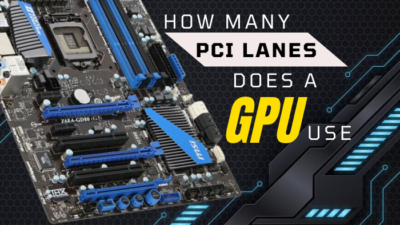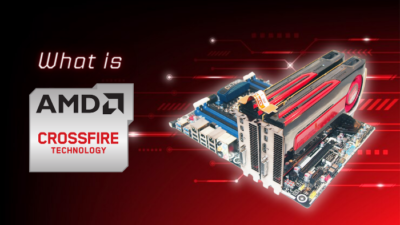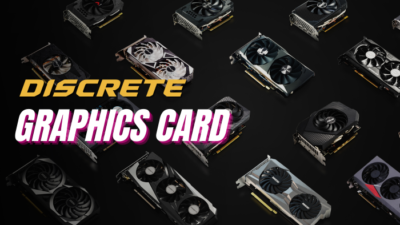When setting up a multi-monitor setup, confusion can arise on which video out ports to use. For reference, the motherboard and the GPU have plenty of display ports available. So, which one should you use?
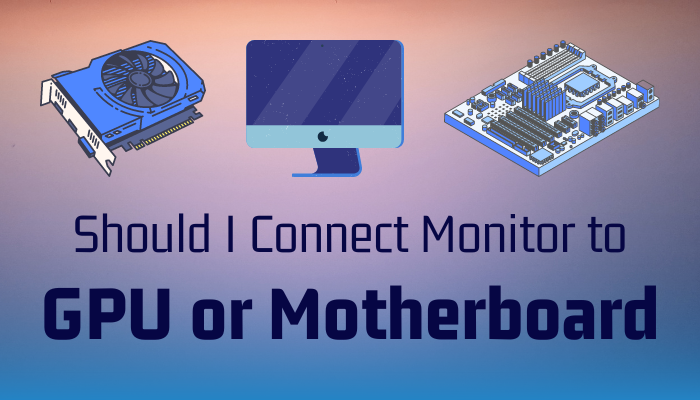
Well, the answer lies in what work you are trying to achieve with the monitors. Mostly you should use the GPU, but in some cases, the motherboard’s HDMI port comes useful.
So, let’s answer this question and look at some possible scenarios you could set up multiple monitors.
Should I Connect the Monitor to GPU or Motherboard?
If you have a graphics card connected, you should use its HDMI or Display port and connect your monitor. Connecting the monitor to the built-in display ports on the motherboard will not get you any display output. Integrated graphics are disabled by the BIOS when you connect a GPU.
In the absence of a graphics card, you can connect the monitor to the motherboard’s HDMI port. That will totally work fine and you should do normal tasks easily.
You can run a monitor using iGPU even when dedicated graphics is present.
But remember, a dedicated GPU will perform much better than integrated graphics in all applications. For web browsing, media playback, and light uses, integrated graphics is fine. But for gaming and encoding videos, there is nothing better than a graphics card.
Is it possible to run two different monitors from two GPUs? Now that really is intriguing. And we explore if you can actually accomplish this in a separate article.
Can you Use Integrated and Dedicated Graphics at the Same Time?
Yes, you can actually. One monitor can be hooked to the GPU and you can connect the other to the motherboard’s HDMI/DVI/VGA port. But first, you need to enable the Integrated graphics from the BIOS.
To do that enter the BIOS by pressing either Del, F2, F8, or the F10 key. Inside the BIOS, go to Advanced options and find Integrated Graphics. Then Enable it. Now all motherboards don’t rock the same BIOS and hence the options will look different for you. But you should find Integrated Graphics or IGPU mentioned, which will help you to enable it.
This is how the option looks on an ASUS motherboard.
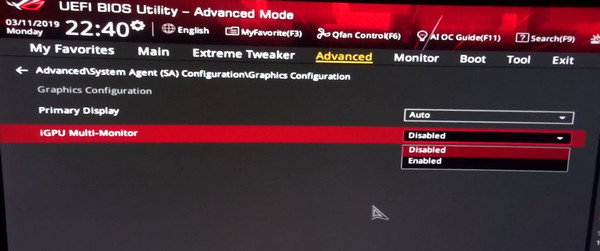
Now you should detect the other display from the Display Settings inside Windows. Make sure the HDMI cable is properly seated in the slot.
These are the steps to set up multiple displays in Windows 10 and 11:
- Press Windows + I to open up Settings.
- Under System, go to Display > Multiple displays.
- Press Detect. If the correct number shows up on each monitor, press Apply.
- Now scroll down and under Multiple Displays, you have the option to Duplicate or Extend the display. Choosing duplicate will make sure you have separate displays displaying video out from the integrated and dedicated GPU.
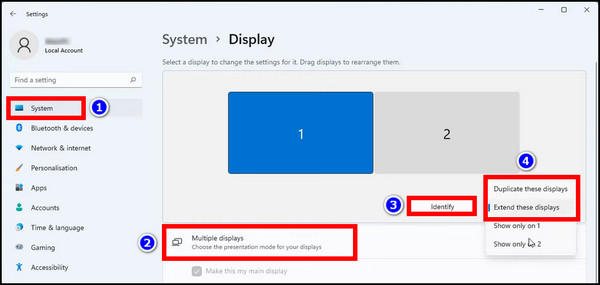
A proper way to use such a setup would be to run a game on one display while showing the Twitch chat on the other. That way you would utilize both types of graphics on your computer.
Are your monitors going black randomly? If you are having a hard time troubleshooting, check out our separate article where we solve this particular problem.
When to Use the Motherboard Graphics and the GPU?
For running simple tasks, integrated graphics are enough. Checking your emails, playing back Youtube videos, and running spreadsheet applications are common examples of common tasks that we do. These do not require you to have a GPU with dedicated memory.
You can also run games if you have an AMD APU that comes with Radeon graphics. They allow you to run even the most modern titles at 720p low details. These are quite competent as compared to previous generations of integrated graphics.
And if you want to run AAA titles with the highest details and fidelity, a dedicated GPU is what you need.
These have many stream processors and built-in fast VRAM that is connected right to the chip. Hence their computational power is multiple times faster than iGPUs. Video Editing, Rendering 3D modeling is some heavy-lifting work that you can do with a dedicated graphics card.
Sometimes monitors display a no-signal message even when connected to your GPU. And that is annoying when it continues to happen randomly. We fixed this issue and wrote a detailed troubleshooting guide. Do check it out if you face the same issue.
Frequently Asked Questions
Should I plug both monitors into GPU?
If your GPU has multiple HDMI ports, connect both your monitors to them. However, if it has display ports or DVI ports, you can use an adapter and connect your HDMI monitors to them. Connecting your GPU to both monitors will give you the best performance.
How to plug monitor into GPU?
Identify the type of cable that the monitor comes with. It can be HDMI, DVI, or Display Cable. Then remove the covers from each cable and insert the cable to the correct port on your graphics card. Connect the other end of the cable to your monitor.
Do you plug the Display port into GPU or motherboard?
You should plug the display port of your monitor into your GPU. It will get you a better performance. Also, most motherboards do not come with display ports. Instead, you will find HDMI ports.
In Conclusion
To sum it up, if you have a GPU, plug your monitor into it. Otherwise, plug into your motherboard’s HDMI port and use the integrating graphics that come built-in.
You will only lose out on performance if you plug in your monitor with an external graphics card connected.
I hope this article answers your question. For addition GPU or motherboard-related queries, go through our other articles.

